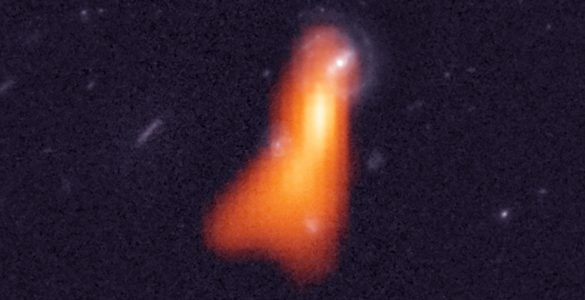Latest NRAO News
News is managed by NRAO News & Public Information. Questions about News? Have a story to share? Want to interview a scientist or create new media about our telescopes?

For the first time, astronomers have pinpointed the location in the sky of a Fast Radio Burst, allowing them to determine the distance and home galaxy of one of these mysterious pulses of radio waves.

Astronomers have gotten their first look at exactly where most of today’s stars were born.

Astronomers studying a cluster of still-forming protogalaxies seen as they were more than 10 billion years ago have found that a giant galaxy in the center of the cluster is forming from a surprisingly-dense soup of molecular gas.

For the first time, astronomers have seen a dusty disk of material around a young star fragmenting into a multiple-star system.

Two students and a teacher from Magdalena, New Mexico, have arrived in the Chilean town of San Pedro de Atacama as part of a Sister Cities program sponsored by the National Radio Astronomy Observatory (NRAO) and Associated Universities, Inc. (AUI).

VLA points to previously unknown galaxy cluster, GBT gets new vision, and ALMA uses double vision.

Observations with the National Science Foundation’s Very Large Array (VLA) have given scientists an unprecedented look into the atmosphere of Jupiter, revealing that features seen in visible light at the planet’s cloud surfaces have effects tens of kilometers downward.

Astronomers have used new capabilities of the National Science Foundation’s Karl G. Jansky Very Large Array (VLA) to open a whole new realm of research into how galaxies evolve and interact with their surroundings over cosmic time.

Astronomers using an orbiting radio telescope in conjunction with four ground-based radio telescopes have achieved the highest resolution, or ability to discern fine detail, of any astronomical observation ever made.

New images of a young star made with the Karl G. Jansky Very Large Array (VLA) reveal what scientists think may be the very earliest stages in the formation of planets.





